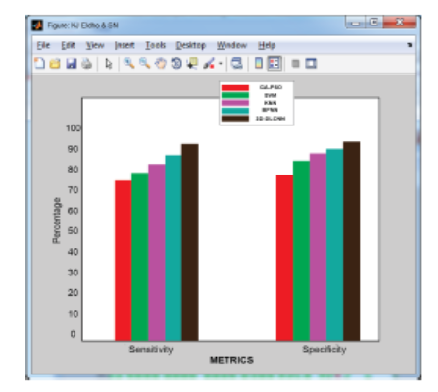


Indian Journal of Science and Technology
DOI: 10.17485/IJST/v17i10.3085
Year: 2024, Volume: 17, Issue: 10, Pages: 899-910
Original Article
K J Eldho1*, S Nithyanandh2
1PG and Research, Department of Computer Science, Mary Matha Govt Aided Arts & Science College, Mananthavady, Kerala, India
2Assistant Professor & HOD, PG Department of Computer Science, Sankara College of Science and Commerce, Coimbatore, Tamil Nadu, India
*Corresponding Author
Email: [email protected]
Received Date:06 December 2023, Accepted Date:31 January 2024, Published Date:27 February 2024
Objectives: To propose a new AI based CAD model for early detection and severity analysis of pulmonary (lung) cancer disease. A deep learning artificial intelligence-based approach is employed to maximize the discrimination power in CT images and minimize the dimensionality in order to boost detection accuracy. Methods: The AI-based 3D Convolutional Neural Network (3D-DLCNN) method is employed to learn complex patterns and features in a robust way for efficient detection and classification. The pulmonary nodules are identified by 3D Mask-R-CNN at the initial level, and classification is done by 3D-DLCNN. Kernel Density Estimation (KDE) is used to discover the error data points in the extracted features for early removal before candidate screening. The study uses the CT-DICOM dataset, which includes 355 instances and 251135 CT-DICOM images with target attributes of cancer, healthy, and severity condition (if cancer is positive). Statistical outlier detection is utilized to measure the z-score of each feature to reduce the data point deviation. The intensity and pixel masking of CT-DOCIM is measured by using the ER-NCN method to identify the severity of the disease. The performance of the 3D-DLCNN model is done using the MATLAB R2020a tool and comparative analysis is done with prevailing detection and classification approaches such as GA-PSO, SVM, KNN, and BPNN. Findings: The suggested pulmonary detection 3D-DLCNN model outperforms the prevailing models with promising results of 93% accuracy rate, 92.7% sensitivity, 93.4% specificity, 0.8 AUC-ROC, 6.6% FPR, and 0.87 C-Index, which helps the pulmonologists detect the PC and identify the severity for early diagnosis. Novelty: The novel hybrid 3D-DLCNN approach has the ability to detect pulmonary disease and analyze the severity score of the patient at an early stage during the screening process of candidates. It overcomes the limitations of the prevailing machine learning models, GA-PSO, SVM, KNN, and BPNN.
Keywords: Artificial Intelligence, Disease Prediction, Lung Cancer, Deep Learning, Cancer Detection, Computational Model, 3D-DLCNN
© 2024 Eldho & Nithyanandh. This is an open-access article distributed under the terms of the Creative Commons Attribution License, which permits unrestricted use, distribution, and reproduction in any medium, provided the original author and source are credited. Published By Indian Society for Education and Environment (iSee)
Subscribe now for latest articles and news.